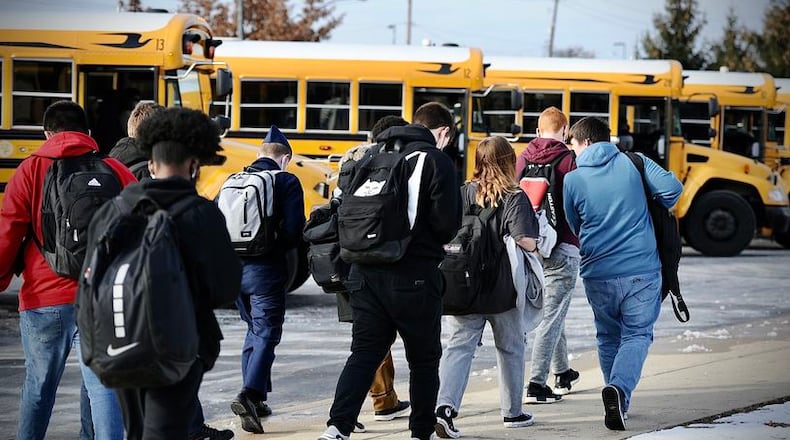State report cards also showed students are more behind in mathematics than they are in English language arts, and students who are economically disadvantaged, disabled and learning English are more significantly behind in both English and math than their peers.
In addition, Black and Hispanic students, who were behind Asian/Pacific Islander learners and white students before the pandemic, are even more behind than they were before the pandemic.
“We had achievement gaps before the pandemic, the achievement gaps are worse,” said Chris Woolard, program director for Ohio’s report cards at the Ohio Department of Education. “And I think that is a real, real, real important takeaway.”
Vladimir Kogan, a political science professor at Ohio State University who has been analyzing results from Ohio’s state tests, said students remain one to one and a half years behind in math. Students are testing at a proficiency rate that is between 10 to 15 percentage points lower than prior to the pandemic in most tested grades, he said in a blog post for the Fordham Institute.
Interim state superintendent Stephanie Siddens said the state needs to consider how to catch up students, especially in literacy and math.
“We also know that we need, as we’ve been talking, to continue focusing on accelerating learning around literacy and numeracy especially,” Siddens said.
The state also noted about 60% of third-graders scored proficient or higher on the reading segment of Ohio’s State Test for English and language arts.
Woolard said he wanted to stress that point in a presentation to the Ohio State Board of Education and said the board should consider spending more on literacy given that statistic. He said a board committee had briefly discussed the spending the day before.
“Clearly, it’s not where we want to be as a state and really highlights the need to focus on literacy,” Woolard said.
Ohio graduation rates continued to rise in the newest round of report cards, Woolard noted. About 87% of students graduated in four years in the 2021 school year, flat compared to the previous year, and up from 85.9% in 2019.
The results from this year’s report cards do not go toward sanctions for the Academic Distress Commission. The results from the report cards released next year, which look at the results from this year, will decide which schools may be put on academic distress.
No charter schools will be closing due to report cards results from this year.
About the Author

